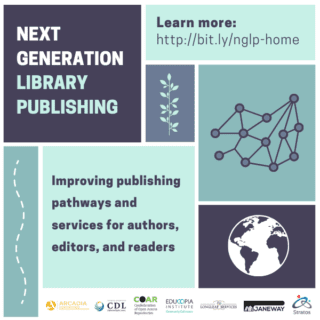
September 8, 2022
Scaling Diamond OA: Universities as Centers of Open Publishing Excellence
By Kristen RatanFrom the Budapest Open Access Initiative 20th anniversary recommendations to the UNESCO Recommendation for Open Science and the Harvard endorsement of Diamond OA, many recent reports on open scholarship are calling for scholarly research to be published and disseminated via open infrastructure that is community-owned and -governed. This call for open infrastructure is particularly important in light of the recent White House (OSTP) memo on equitable access to research, which is likely to result in a massive wave of open research publications.
There is growing recognition that open access publishing on closed infrastructure restricts how truly open research can be—by limiting opportunities for participation by mission-driven and non-profit publishers and stewards, restricting the types of collaboration that can build scale, and increasing reliance on the profit-driven, commercial publishing companies that have long controlled the scholarly communication space. To leverage the growing interest in Diamond Open Access and to fully realize the vision of equitable access to knowledge, both in its production and its dissemination, it is more crucial than ever to support interoperable open infrastructure.
“The NGLP project is advancing the field in interoperable open infrastructure and establishing trusted services, which will greatly increase the capacity for Diamond OA.”
– Johan Rooryck, Executive Director of cOAlition S
Institutions and organizations looking for robust, open-source scholarly communication solutions also need trusted service providers (and service provider options) to ensure that their open access publishing and dissemination needs will be met. The current publishing environment is dominated by commercial conglomerates that inextricably tie knowledge production and dissemination with profit and business development interests. We envision an ecosystem that shifts the balance away from profit-based publishing models and toward values-based publishing, with institutional centers of excellence for Diamond OA and other non-APC-based OA models. Universities and nonprofits are key players in this ecosystem and are well positioned to provide values-driven publishing solutions that are uniquely tuned to the needs of their academic communities.
The Action Plan for Diamond Open Access calls for more accessible, interoperable, and streamlined technical services for Diamond journals and platforms. The report states that, “Particular attention will be paid to the alignment and interoperability of submission systems, journal platforms, and metadata.” Johan Rooryck (cOAlition S), one of the authors of the Action Plan, said, “The NGLP project is advancing the field in interoperable open infrastructure and establishing trusted services, which will greatly increase the capacity for Diamond OA.”
The Next Generation Library Publishing project (NGLP) is a grant-funded initiative focused on providing robust scholarly publishing solutions based on open infrastructure and in conjunction with trusted service providers. NGLP’s extensive community engagement work with library publishers has revealed pent-up demand for open infrastructure that allows them to both build capacity within their publishing programs and, at the same time, support community-led solutions. As part of the vanguard of Diamond OA publishing, libraries are well-positioned to lead transformational change away from extractive models of scholarly communication and towards resilient, ethical, and equitable forms of knowledge sharing.
There is historic momentum within libraries to abandon proprietary technologies and invest in open ones—and growing demand from research communities for publishing models that genuinely serve their interests. NGLP has engaged with seven institutions and four service providers who are in the process of working with us to evolve our technical infrastructure from pilot to production. Enthusiasm is high, both for this work and for this new set of options for hosted publishing infrastructure in open, community-led environments. This effort exemplifies and embodies the values-driven publishing solutions that so many in the library publishing community have called for.
“We are inspired by this vision of library publishing and are eager to be a part of the community that will make it happen.”
– Jeanne Pavy, Scholarly Communications Librarian at University of New Orleans
That said, the timeline for a client base to buy into new hosted services, regardless of the level of enthusiasm, is not immediate; there is often a gap between the moment a project matures to production service level capacity and the moment that clients and customers can actually begin paying for services. Even the most passionate supporters have, by necessity, a phased plan for adoption. Once NGLP’s service providers—Longleaf, CDL, and Janeway to start—are ready to offer production services, for example, each library client will need to address existing infrastructure, manage expectations from authors and editors, and cancel existing contracts with commercial providers before they can sign on for new services. Transition funding is often helpful in enabling teams to work through procurement processes, undertake pre-migration clean-up, and prepare their stakeholders (authors/editors) for changes. Before a production environment can experience success, it needs time to organize and coordinate activities.
Our NGLP project team is at a point of inflection: we know we have a solution nearly ready for production that meets the real needs of library publishers, and potentially also many university presses and society publishers. But launching production services with clients requires major work, including sales, marketing, procurement engagement, and migration support. Without funding to enable that transitional work, the major investment and accomplishments of this project, like so many before it, will flounder, eroding hope, yet again, in community-led and academy-centered solutions.
Sufficient funding for this work, on the other hand, would mean opening the options for library publishers in significant ways, both individually and as consortia. Consortia in particular may be key to establishing the landscape we envision, with many centers of diamond OA excellence. This is how we get scale. And this is how we begin to transform our sector.